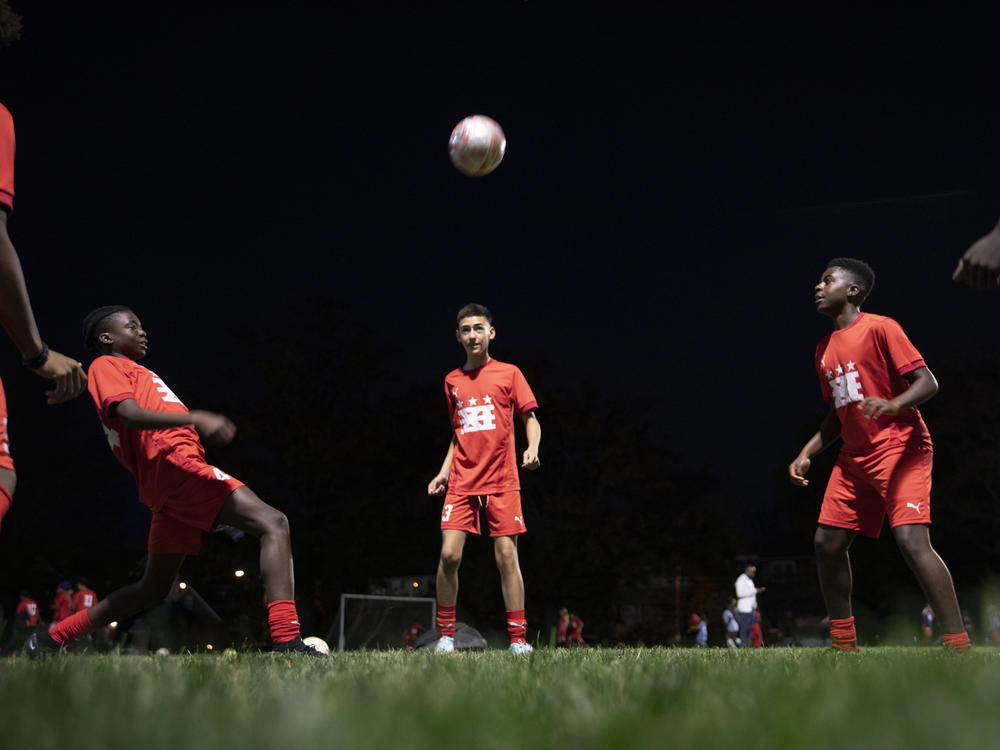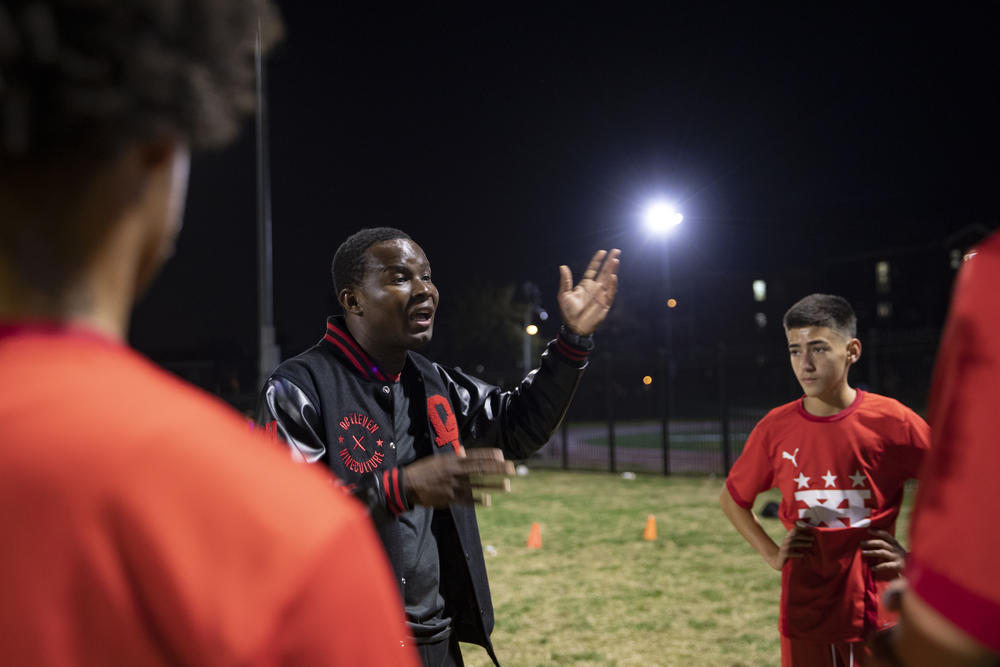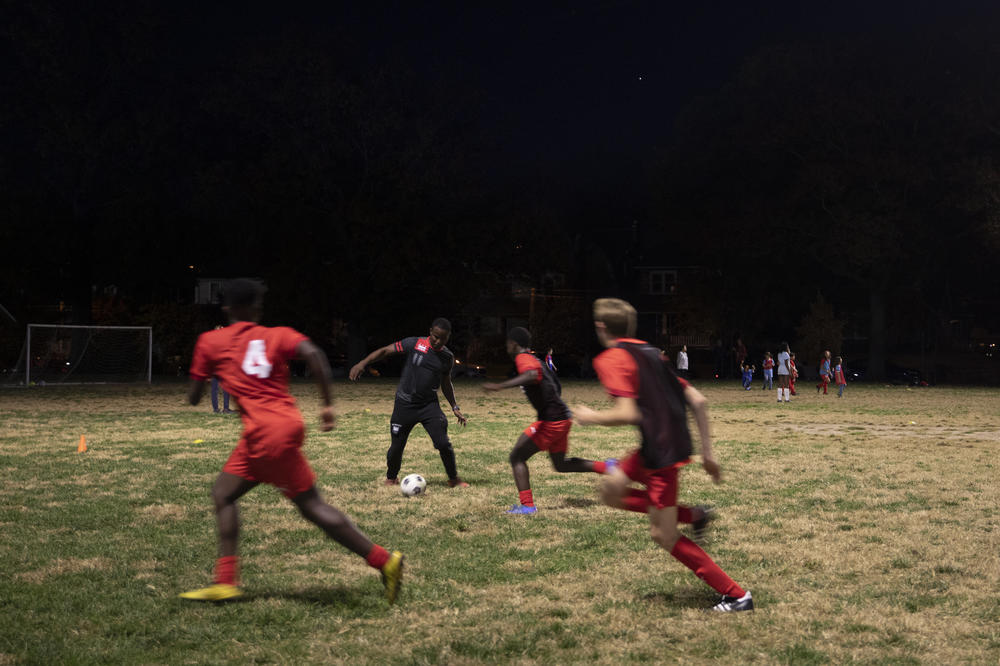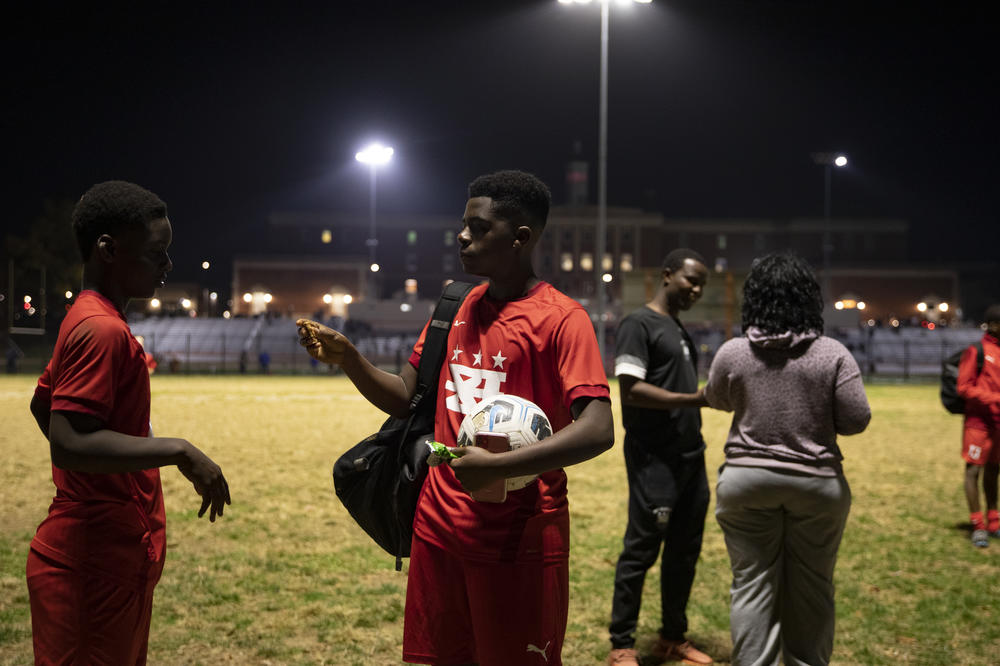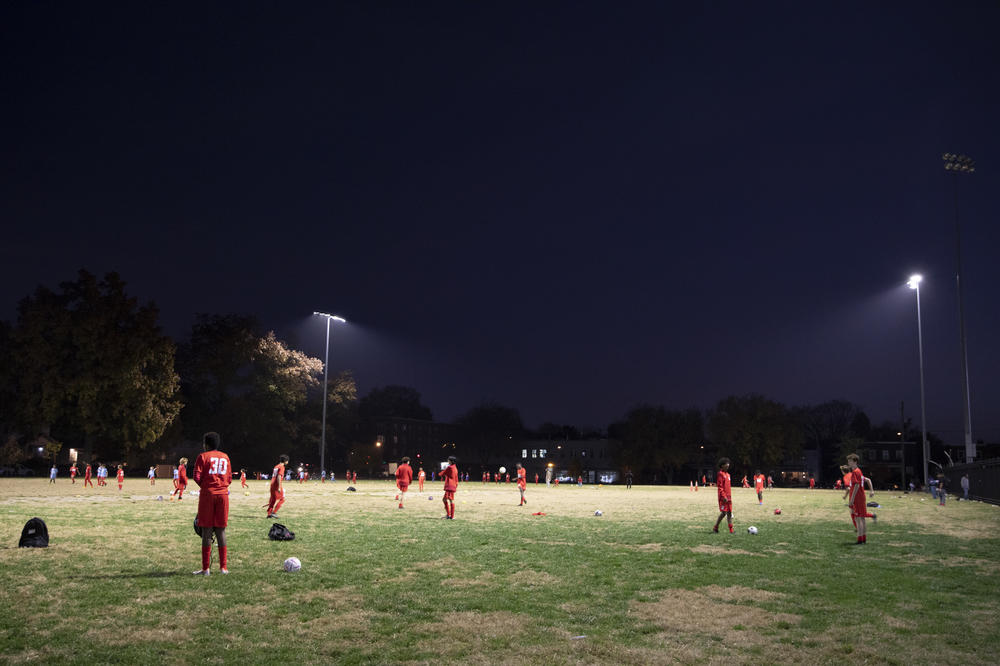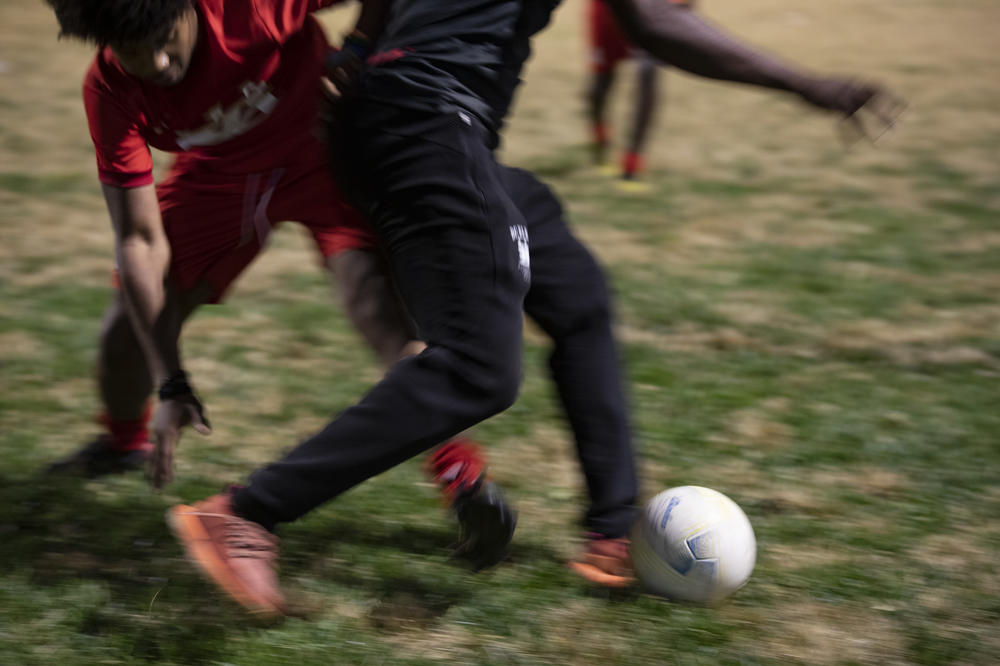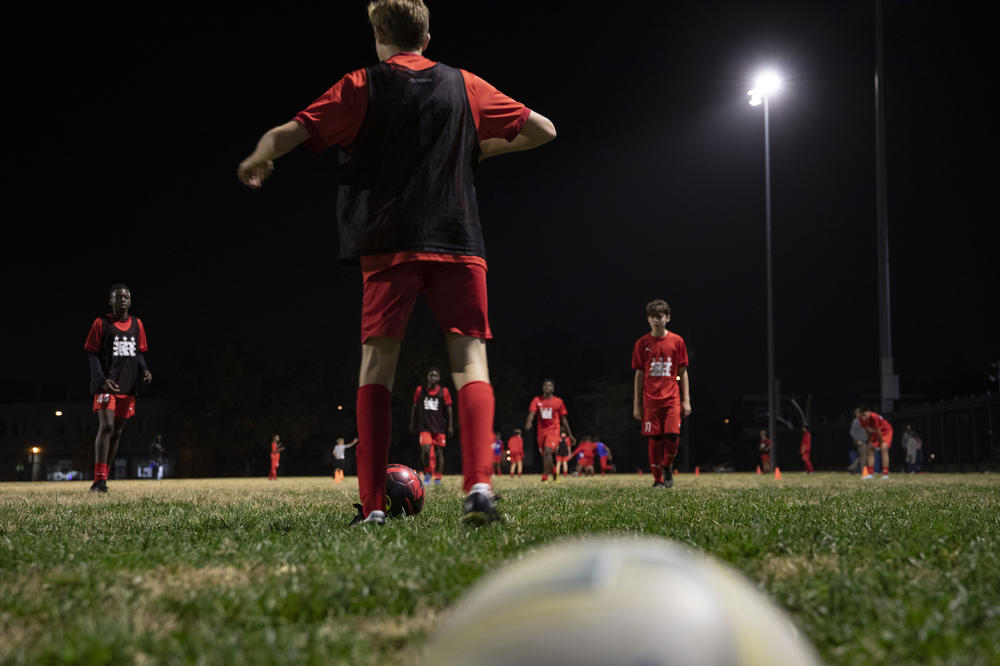Section Branding
Header Content
Club soccer puts the sport out of reach for many kids
Primary Content
Youth soccer coach Pierre Hedji co-founded the club DCXI to give kids in Washington, D.C., a chance to learn the game, develop their skills and compete, just as he did when he was a kid growing up in Benin.
"It was street soccer," he remembers, "you were using whatever you had — your shoes, your backpack — as a goal."
When he moved to the U.S. as a 12-year-old, he played pickup games, mostly with other immigrants. He remembers being really impressed when one day a kid brought actual cones.
"That was fancy," he smiles.
Unlike most of the clubs in the D.C. region, DCXI (DC Eleven) has a kind of pay-what-you-can model. They hold evening practices so that parents who work can bring their kids.
In some of the more affluent D.C. suburbs, it's a different story.
DCXI's U15 team recently played a game in Chantilly, Va., against a team from Loudoun County.
"This is the mecca of pay-to-play," Kevin Salandy says after the game. His son played for the Virginia team. "There's a lot of money in Loudoun County. That's why they have all these teams and these facilities."
Families like Salandy's are spending small fortunes to let their kids play club or travel soccer.
"Across my three kids, I probably spent about $10,000 a year," says Salandy, a software consultant.
But pay-to-play has a lot of critics who say it's not benefitting kids or the sport.
"The amount of money these clubs retain, the amount of industry in this area," Salandy says, "I think a lot more could be done in terms of subsidizing the costs for those that need it."
Some families make the investment in club soccer because they can. It's fun for their kids, good exercise, and they get experience playing on a team.
"If you're looking at it from a youth development standpoint, then there are certainly benefits that come out of it," says Lindsey Blom, a professor of sport and exercise psychology and chair of the School of Kinesiology at Ball State University. But for some families, club soccer is a more serious endeavor.
Peter Guthrie, a longtime youth soccer referee and former coach, says, "In some cases, they believe that this is going to be the path for their child to get to college. So they have to do well as a 10-year-old in order to get that college scholarship."
In fact, a small fraction of high school soccer players receive scholarships to play in college, a mere 1.1% at the Division 1 level. An even smaller fraction go on to play professionally. Paying to play doesn't guarantee a child will receive the best coaching, either.
"So that is the myth," says Blom. "People think that the more I put into my child's experience financially, the more successful they're going to be and the more they're going to get out of it. And we do not find that to be the case."
Another problem with pay to play: inequities on school teams. Kids who can't afford club soccer could play on their high school teams where it's generally free. But in tryouts, they often have to compete against more experienced kids who come from families that can pay for clubs.
Younger travel teams push out players before they can bloom
"Pay to play is more of a problem than ever before," says Tom Farrey, executive director of the Sports & Society Program at The Aspen Institute. "We now have families being charged thousands of dollars for their children to chase a ball on a green field and try and push the ball into the back of a net that cost very little."
When it comes to youth soccer opportunities, the U.S. lags the rest of the world, he says. "We are just structurally pushing aside kids who want to play a game that is accessible around the world to kids of all income categories."
Farrey would like to see high schools create more teams to meet the demand.
"If you have 130 kids try out for the soccer team, don't just have one varsity team. Create two varsity teams," he says. "Make sure you have a JV and a freshman team, and do whatever you can not to cut kids."
There's money in youth soccer. As a result, more and more clubs are popping up around the country, and they're being offered to younger and younger kids.
"The fundamental flaw in American youth sports, and particularly soccer, is we are sorting the weak from the strong well before kids grow into their bodies, their minds and their interests," Farrey says. "By creating these travel teams at ever earlier ages, we're pushing aside the late bloomer. We're pushing aside the kid from the lower income home that can't afford the youth sports arms race or doesn't have a second parent in the home to drive them to this endless array of practices and games, some of which are two counties away or sometime two states away."
There are efforts around the country to level the playing field. Lots of private clubs offer scholarships, for example. And there's Pierre Hedji and the DCXI club with its hybrid model.
"Some are paying. Some are not paying," he says, "because, the thing is, we want to be able to help the next kid. So if you can afford to pay the whole thing, pay the whole thing. That way we can afford to help the next kid that can't pay anything at all."
Of course, winning is also sweet. DCXI beat the Loudoun County team, 5-0.
Copyright 2022 NPR. To see more, visit https://www.npr.org.
